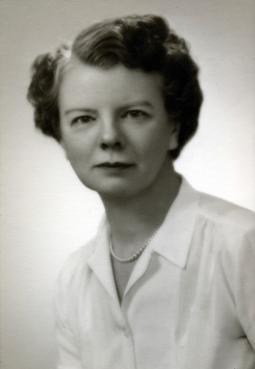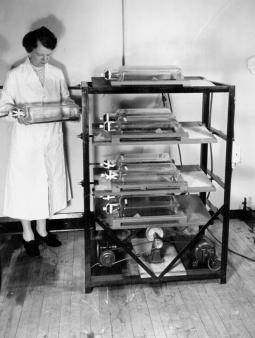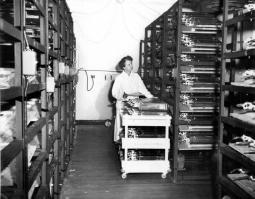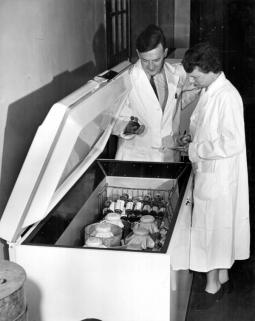Polio Place
A service of Post-Polio Health International
Leone Norwood Farrell, PhD
Born: April 13, 1904
Died: September 24, 1986
Major Contribution:
Leone Farrell, PhD, was a key figure in the successful mass production of the polio vaccine, enabling Jonas Salk and his team enough serum to perform the initial polio vaccine trials in 1954. As part of a Canadian team of scientists, Farrell supervised a complex production process known as the “Toronto Method” resulting in about 3,000 liters of poliovirus fluids. The process involved filling 5-litre rectangular bottles with “Medium 199” and a small number of monkey kidney tissue cells, and then gently rocking the fluid on specially designed machines to trigger the production of cells.
Other Information:
Brief Biography: Leone Farrell was born in Monkland Station, Ontario, and was raised in Toronto. In 1933, at the age of 29, she obtained a PhD in Biochemistry at the University of Toronto—a rarity for women in those days. Her specialty was the study of fungi, and she spent two years working as a chemist looking at yeasts in honey for the National Research Council of Canada. In 1934, twenty years before the polio trials, she joined the staff of Connaught Laboratories (now Sanofi Pasteur) at the University of Toronto. (Connaught Laboratories were founded in 1914 as a self-supporting part of the university, dedicated to the research, development and production of essential public health products, especially vaccines. Connaught remained a unique part of the university until 1972, after which it was privatized.)
During her studies of staphylococcus toxoids, antibiotics, penicillin and the prevention of bacterial infections such as diphtheria, cholera and whooping cough, Farrell came up with a unique method of gently "rocking" large bottles containing the pertussis bacteria to stimulate its growth for production of a whooping cough vaccine. This discovery would prove to be crucial ten years later in the race against polio.
Dr. Farrell was among the teams of American and Canadian scientists who waited in anticipation for the results of the Salk trials to be announced on April 12, 1955. The trials were the largest medical experiment of all time, involving almost two million children in Canada, Finland and the United States. But although Farrell's contribution was recognized by her contemporaries, she returned to work in relative obscurity after the announcement that the vaccine used in the trials was safe and effective.
She continued to publish research papers well into her 60s and lived to the age of 82. But she died alone; her gravesite--Lot 707 in the Park Lawn Cemetery--was initially unmarked and, until recently, revealed nothing of the key role she played in eradicating polio. Later, her relatives added Leone Farrell’s name to her family’s headstone and an engraved detailing her life’s work erected underneath.
March 2011/Carol K. Elliott/Post-Polio Health International





















































